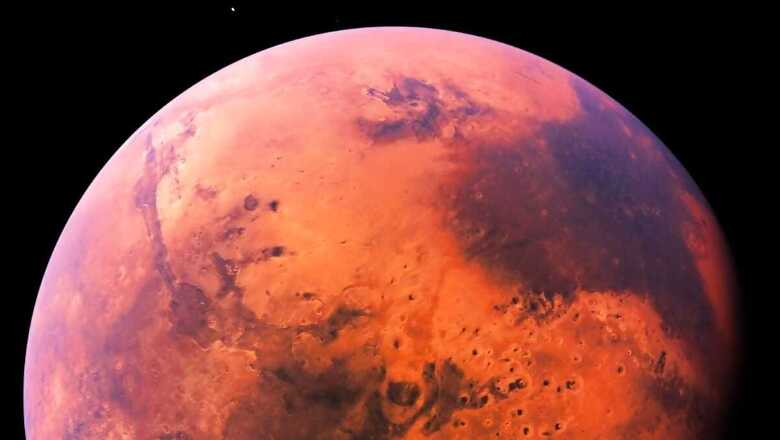
views
There appears to be sufficient water on Mars for an ocean a mile deep, scientists have discovered. There’s only one major issue. The water that apparently exists on Mars is too deep beneath the surface for humans to access. This is supported by peer-reviewed research published on Monday in the Proceedings of the National Academy of Sciences. This finding was based on seismic data that NASA’s robotic InSight lander collected during a mission that assisted in understanding Mars’ interiors. The scientists are affiliated with the Universities of California, Berkeley and UC San Diego.
A seismometer that the lander carried captured four years’ worth of Mars quakes, or tremors, from deep below the Red Planet. “Seismic signals” of liquid water were discovered through an analysis of those quakes as well as the precise motion of the planet.
Although evidence of vapour may be detected in the atmosphere, and there is water that is frozen in the Martian poles, this marks the first time that water has been officially discovered on the planet.
The water, between 11.5 and 20 kilometres below the surface of Mars, may provide suitable circumstances for the survival of microbiological life, either today or in the past, according to the scientists.
Moreover, even if that water is inaccessible, it represents a significant component of the peculiar mosaic of our dry, dusty neighbour’s aquatic past.
As per Dr. Vashan Wright, co-author of the study from Scripps Institution of Oceanography at the University of California San Diego, “Our liquid water estimate is more than the water volumes proposed to have filled possible ancient Martian oceans.”
As for Wright’s analysis, the most plausible explanation for both seismic and gravity data is a mid-crust with broken rocks that are soaked with water.
Wright went on to say that the volume of water trapped in the rock fissures would create an ocean 1-2 km deep on Mars if the measurements made at the Insight lander location were indicative of the entire planet.
“On Earth, groundwater underground infiltrated from the surface, and we expect this process to have occurred on Mars,” according to him.
Wright also said that the infiltration had to have occurred when the top crust was hotter than it is now. He went on to say that an awareness of the Martian water cycle is essential to comprehend the changes in the planet’s core and surface environment.
Once warm and moist, the Martian landscape is now chilly and barren. This changed more than three billion years ago. According to the study, a large portion of the water that was formerly on the Martian surface filtered into the crust rather than escaping into space.
After the lander silently listened to The Pulse of Mars for four years, Insight’s scientific mission came to a conclusion in December 2022.
Over 1,319 earthquakes were reported by the probe over that period.
Scientists have calculated the most likely substance that seismic waves are travelling through by measuring the speed at which they move.
“These are actually the same techniques we use to prospect for water on Earth or to look for oil and gas,” said Prof Michael Manga, a researcher from the University of California, Berkeley, for the study.




















Comments
0 comment